The inspection procedures for Garage Vehicle Door Openers addresses the applicable safety standards that designate a Primary Entrapment Protection device as one that relies on downward travel resistance when the door is closing. Optical sensors (so-called “electric eyes”) are Secondary Entrapment Protection devices. These procedures are based on the Consumer Product Safety Commission (CPSC) mandatory safety rule 16 CFR part 1211. The Consumer Product Safety Improvement Act of 1990 (Improvement Act) mandated that automatic residential garage door operators (GDOs) manufactured on or after January 1, 1991 conform to the entrapment protection requirements of the 1988 version of UL 325. On June 19, 1991, the Commission issued the garage door operator standard (16 CFR Part 1211).
Assess the garage carefully to determine if there are any obstacles or personal belongings that will prevent or interfere with safe door operation. This must include vehicles or personal property that are in the closure path of an open vehicle door. Inspect the door tracks. They must be free of damage, or any obstacles or locking devices that will impede the door’s movement.
Perform an operational test of the opener. The company-supplied GDO test block, or a suitable substitute, must be used. Your outstretched arms are not acceptable. A flashlight or roll of paper towels on the ground is not acceptable. The door should reverse within 2 sec. of closing on the test block and fully re-open . Once you have confirmed that the primary reverse mechanism works, re-test the door by breaking the optical beam. The door should reverse immediately and open fully.
The automatic garage door opener is an older type that appears to lack an auto-reverse safety feature. This can be hazardous for vehicles or people beneath the door when it is closing. Replace the garage door opener.

The automatic opener at the vehicle door does not have an optical sensor. While it may not have been required when the opener was installed, this is a safety hazard. Install optical sensors.
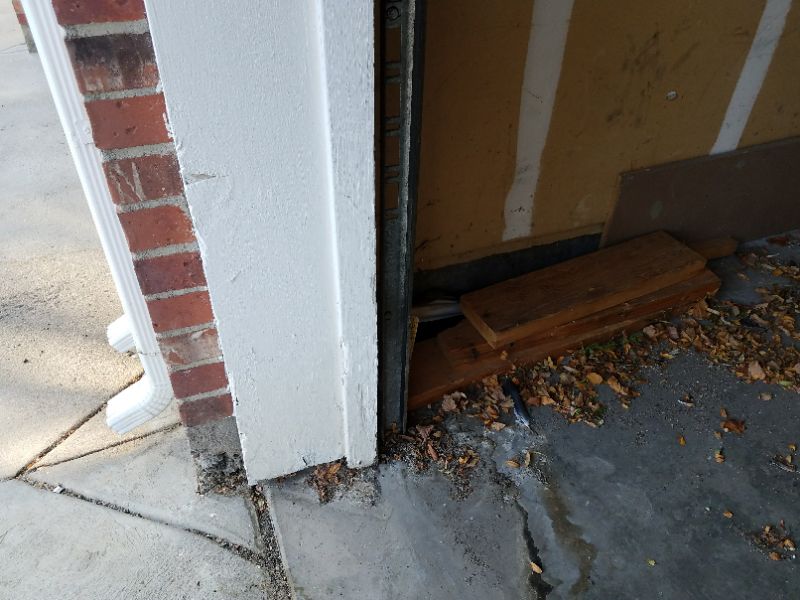
The optical sensors are improperly installed at the garage vehicle door’s automatic opener. The recommended height for safe operation is 4″ – 6″ from the floor. Reinstall the optical sensors.
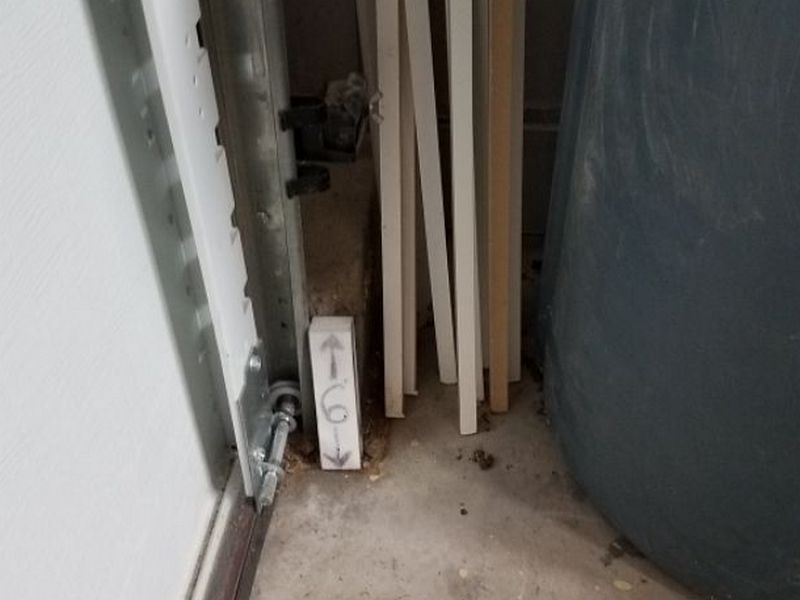
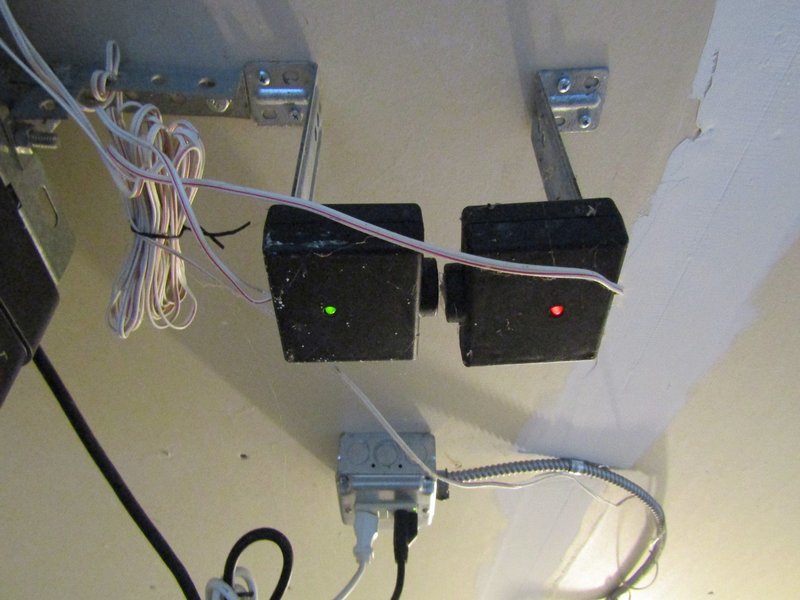
The automatic opener does not reverse properly at the garage vehicle door. It should reverse within 2 seconds of closing on a 1 – 1.5″ object placed on the floor. This is a safety hazard. Repair or replace the garage door opener.

The garage vehicle door opener’s emergency disconnect rope is missing or too high. This is a safety concern. Install or lower a disconnect rope.
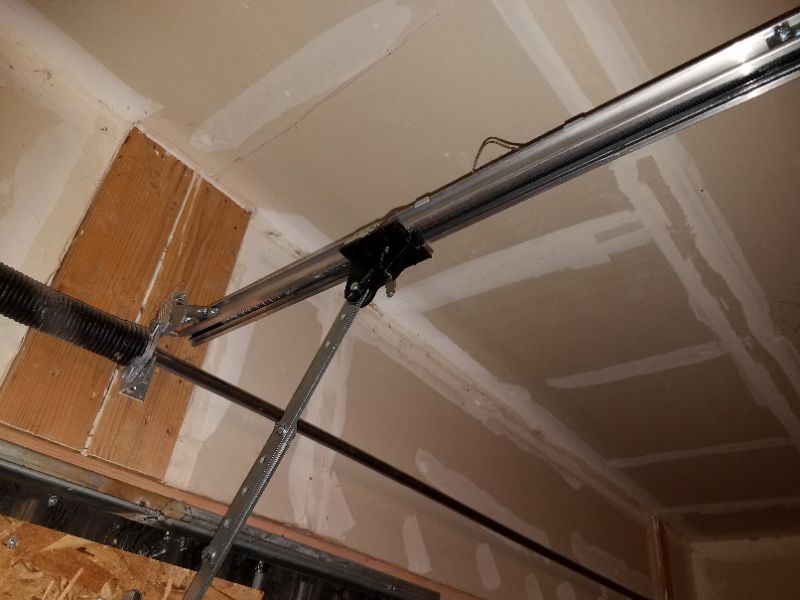
The chain on the automatic garage door opener has too much slack. This allows shocks to the mechanism during operation and can cause the chain to break or come off. Adjust the chain.
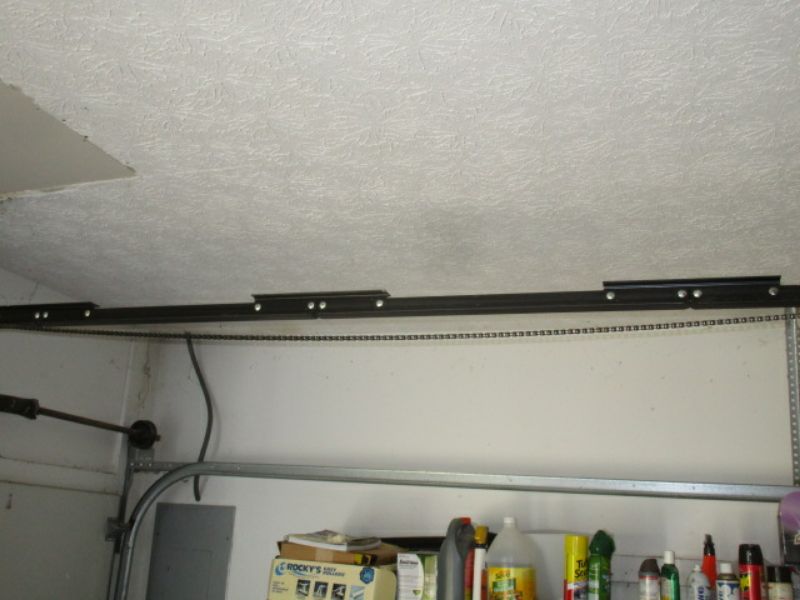
The garage door automatic opener is not securely mounted. This is a safety concern. Securely mount the garage door opener.
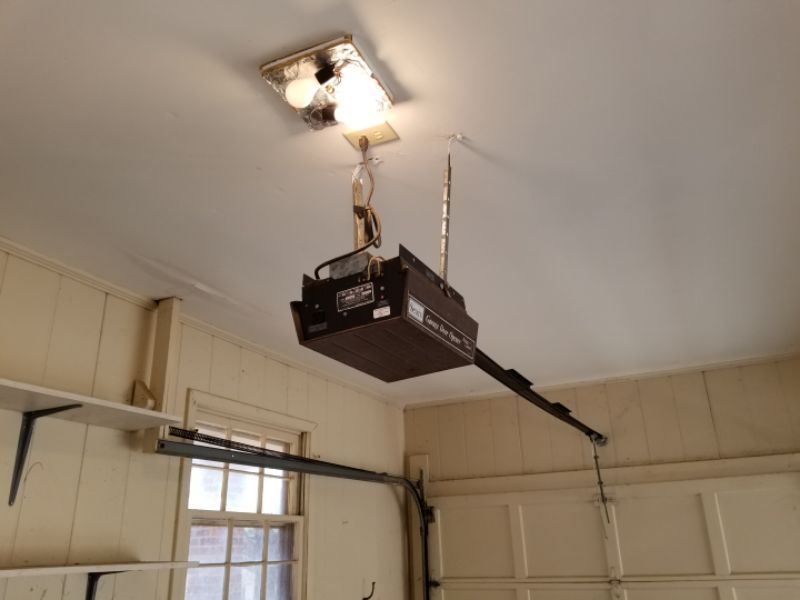

The wall button for the garage door opener is damaged or missing. This can affect proper operation. Repair or replace the wall button.
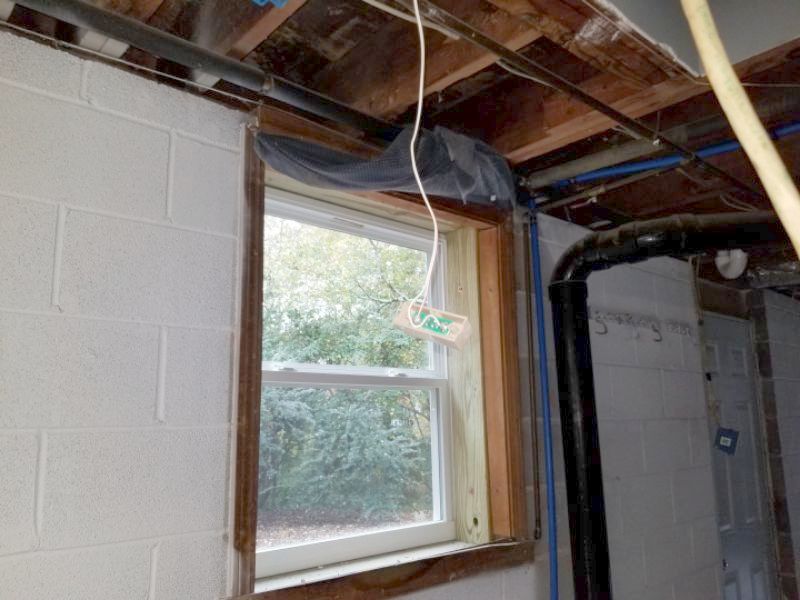
The wall button/keyless entry pad for the garage door opener is mounted too low to the floor. These should not be lower than 5′ above floor level so that children cannot activate the door without supervision. Relocate the wall button.
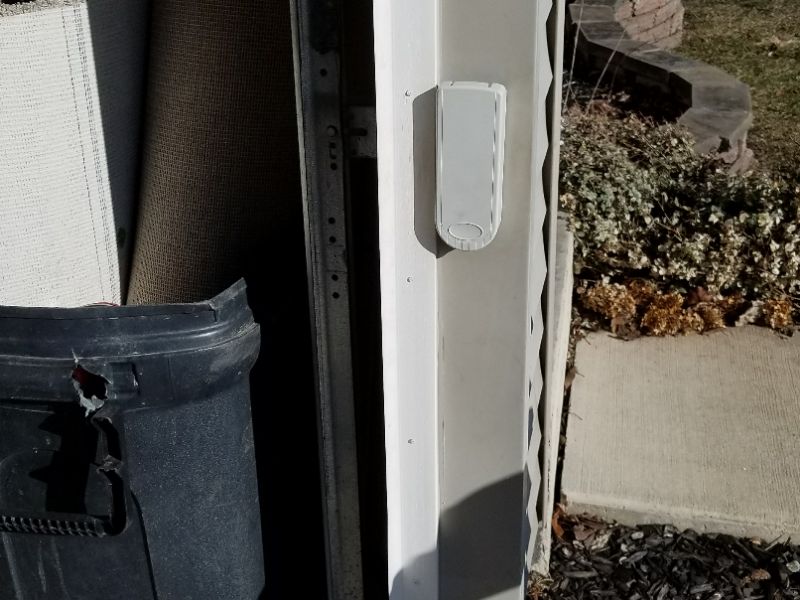
1. INTRODUCTION
1.1 This standard covers the procedures for inspecting garage door operators (GDO).
1.2 These Field Procedures address the applicable safety standards that designate a Primary Entrapment Protection device as one that relies on downward travel resistance when the door is closing. Optical sensors (so-called “electric eyes”) are Secondary Entrapment Protection devices.
1.3 These Field Procedures are based on the Consumer Product Safety Commission (CPSC) mandatory safety rule 16 CFR part 1211. The Consumer Product Safety Improvement Act of 1990 (Improvement Act) mandated that automatic residential garage door operators (GDOs) manufactured on or after January 1, 1991 conform to the entrapment protection requirements of the 1988 version of UL 325. On June 19, 1991, the Commission issued the garage door operator standard (16 CFR Part 1211).
1.4 FROM 16 CFR PART 12II:
A. § 1211.7 Inherent primary entrapment protection requirements.
(a) General requirements. A vertically moving residential garage door operator system shall be supplied with inherent primary entrapment protection that complies with the requirements as specified in paragraph (b) of this section.
(b) Inherent primary entrapment protection, vertically moving doors.
For a vertically moving residential garage door operator system, ……… the operator of a downward moving residential garage door shall initiate reversal of the door within 2 seconds of contact with the obstruction as specified in subparagraph (b)(3) of this section.
(3)(i) A solid object is to be placed on the floor of the test installation ……. and located in line with the driving point of the operator. When tested on the floor, the object shall be 1 inch (25.4 mm) high.
2. PRIOR TO THE INSPECTION: THE NIGHT BEFORE
2.1 Inspectors shall:
A. Ensure that they have received the company-issued GDO test block, and are carrying it to their inspections.
B. Ensure that they are fully familiar with applicable state and local requirements. Most GDO manufacturers and jurisdictions allow testing of the Primary Entrapment Protection device by using a 2×4 board laid on the wide side (1 ½”- 3.8cm). NOT ALL DO. Additionally, some jurisdictions have adopted newer versions of The Standards based on recent revisions to UL 325. These recommendations to the CPSC include a requirement that the door control button must be held down continuously to complete closure.
3. PRIOR TO THE INSPECTION: ON SITE
3.1 It is important to inspect in a methodical and regular manner. All accessible vehicle doors equipped with a GDO must be inspected following these procedures.
A. Assess the garage carefully to determine if there are any obstacles or personal belongings that will prevent or interfere with safe door operation. This must include vehicles or personal property that are in the closure path of an open vehicle door.
B. Be aware of any children present. Notify the appropriate adults that they must supervise children during your testing to prevent a personal injury, or allow a child to leave the property when a door(s) is open.
C. Ensure that opening a vehicle door will not allow a pet to escape. Request the assistance of the Homeowner or Realtor® as needed.
4. THE INSPECTION PROCESS: VISUAL ASSESSMENT
4.1 Start your inspection with a visual assessment. Identify which doors have a GDO. The steps that follow should be applied with each vehicle door in turn. Operating a GDO without a careful examination first can result in property damage and/or personal injury. Report all defects, taking photos whenever possible.
A. Observe the GDO mechanism to determine if it is plugged in. If it is not, or if the power is not on at the property, report the GDO as “Not Inspected” due to no power. Report any electrical installation defects in the “Electrical” section.
B. Inspect the door tracks. They must be free of damage, or any obstacles or locking devices that will impede the door’s movement. They should be straight front-to-rear, and securely installed with all fasteners present. The rail between the motor and door, if present, should also be straight front to rear and attached at the door’s left-to-right center point.
C. Inspect the motor unit. Ceiling-installed units should be mounted securely to prevent wobbling. Two or more angled brackets are normally needed. A minimum distance of 7’ from the floor is usually required. It should be at approximately the same height as the drive track or where the door will be when fully open. The drive chain, if present, should be tight enough to prevent it from hanging at or below the bottom of the rail between the motor and the door. All control wires should be clear of moving parts.
D. Inspect the door, springs, rollers, and mounting points for damage, looseness and/or missing fasteners. The drive rail, if present, should be connected to solid framing, normally using a mounting block.
E. The Emergency Release Handle should be installed no higher than 6’ from the floor.
F. The door control switch or push button should be no lower than 5’ from the floor to prevent children from operating it.
5. THE INSPECTION PROCESS: PRIMARY ENTRAPMENT PROTECTION
5.1 Perform an operational inspection after completing the procedures in Sections 3 and 4. Repeat the steps outlined with each door present. Report all defects, taking photos.
5.2 The company-supplied GDO test block, or a suitable substitute, must be used. Your outstretched arms are not acceptable. A flashlight or roll of paper towels on the ground is not acceptable. Any test object must be a solid material of the proper dimensions as noted in Sections 1.4.A or 2.1.B.
A. Open the door by pressing the control switch or push button briefly and then releasing it. The door should open completely without holding down the button. Do not move away from the control.
B. Be alert for any unusual noises or stalled movement that may indicate an obstacle, damaged track, or faulty operator. If any is noted, stop the door’s movement immediately using the control button. Inspect the door installation to determine if any problems were missed during the visual inspection. If none is evident, close the door using the control switch. If the door will not operate you may need to use the Emergency Release Handle. Report any defects. Inform your client and the Realtor® of any problems that prevent you from closing the door and securing the property.
C. When the door is fully open, place the GDO test block on the ground in line with the drive point of the opener.
D. Close the door, pressing the control switch briefly and then releasing it. The door should close completely without holding down the button. [See Section 2.1.B]
E. The door should reverse and fully re-open within 2 sec. of closing on the test block. If it does not, take a picture of the door closed on the block. Take a picture of any Manufacturer label present that outlines testing with a block. Report the defect and insert the photos, noting which door is defective.
6. THE INSPECTION PROCESS: SECONDARY ENTRAPMENT PROTECTION
6.1 Visually inspect for the presence of Secondary Entrapment Protection devices. These are optical sensors, or so-called “electric eyes”.
6.2 Report as a defect if none are present. In an RPA, report as Inoperative with additional information that none are installed.
A. The optical sensors should be installed at 4” to 6” above the floor. Report as defective if otherwise.
B. Once you have confirmed free closure of the door by following the procedures in Section 5.2.A -E, press the operator button to close the door from an open position.
C. Move to the door opening and break the optical beam. The door should reverse immediately and open fully. Report as defective as needed.
7. WRAPPING UP
7.1 Ensure that all doors are left as you found them. If a defective condition has prevented properly securing the property be sure to discuss this with any Realtors® present. Reasonable efforts should be made to inform the Homeowner(s) as needed.
7.2 Remember that these Field Procedures describe the only approved standards for testing GDO Primary Entrapment Protection devices. On rare occasions, damage to the door or overall installation may occur when following these procedures. Any damage should be reported promptly to your Area Manager so it may be referred properly to HQ staff. Do not become involved in any arguments on-site. A polite explanation of why the testing method was used is sufficient.
